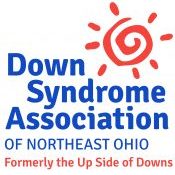What is Down Syndrome?
Down syndrome is a genetic condition resulting from the presence of all or a partial extra copy of chromosome 21 – individuals with Down syndrome have 47 instead of the usual 46 chromosomes. This additional genetic material alters development and causes the physical characteristics associated with Down syndrome.
Although each person with Down syndrome is unique in their own way, some of the common traits of Down syndrome are – low muscle tone, small stature, an upward slant to the eyes, a single deep crease across the center of the palm and some degree of intellectual disability.
People with Down syndrome have an increased risk for certain medical conditions such as congenital heart defects, respiratory, hearing and vision problems, childhood leukemia, thyroid conditions, gastrointestinal issues, and Alzheimer’s disease. Many of these conditions are now treatable, so most people with Down syndrome lead healthy lives.
It is important to note that a caring and enriching home environment, early intervention and integrated education efforts will have a positive influence on the child’s development.
How Common is Down Syndrome?
One in every 691 babies in the the United States is born with Down syndrome, making Down syndrome the most common genetic condition. Approximately 400,000 Americans have Down syndrome and about 6,000 babies with Down syndrome are born in the United States each year. The Up Side of Downs welcomes approximately 30 new babies each year.
Are There Different Types of Down Syndrome?
There are three types of Down syndrome:
- Trisomy 21 (nondisjunction) – results in an embryo with three copies of chromosome 21 instead of the usual two. Prior to or at conception, a pair of 21st chromosomes in either the sperm or the egg fails to separate. As the embryo develops, the extra chromosome is replicated in every cell of the body. Trisomy 21 accounts for 95% of all cases of Down syndrome.
- Mosaicism – occurs when nondisjunction of chromosome 21 takes place in one – but not all- of the initial cell divisions after fertilization. When this occurs, there is a mixture of two types of cells, some containing the usual 46 and others containing 47. Mosaicism accounts for 1% of all cases of Down syndrome.
- Translocation – part of chromosome 21 breaks off during cell division and attaches to another chromosome, typically chromosome 14. While the total number of chromosomes in the cells remain 46, the presence of an extra part of chromosome 21 causes the characteristics of Down syndrome. Translocation accounts for about 4% of all cases of Down syndrome.
Additional Resources about Down Syndrome
National Down Syndrome Society
National Down Syndrome Congress
Global Down Syndrome Foundation
